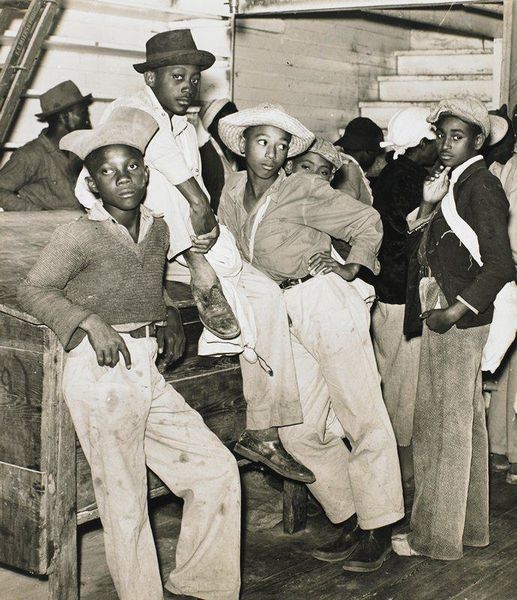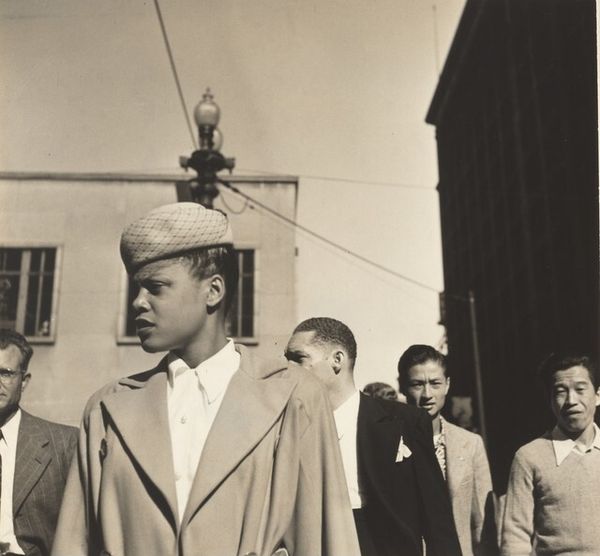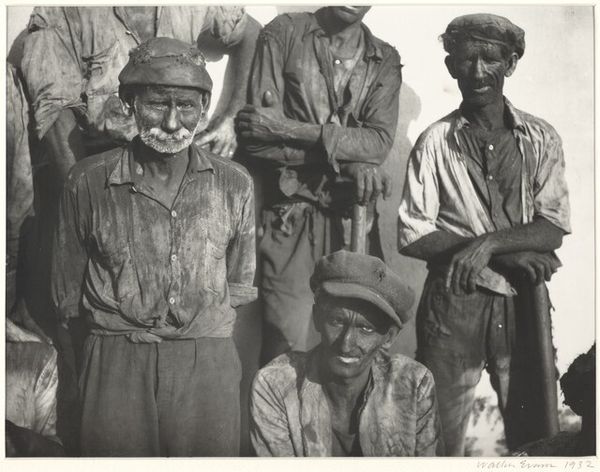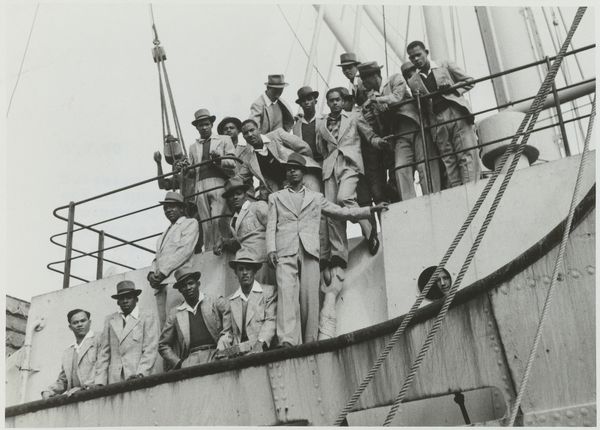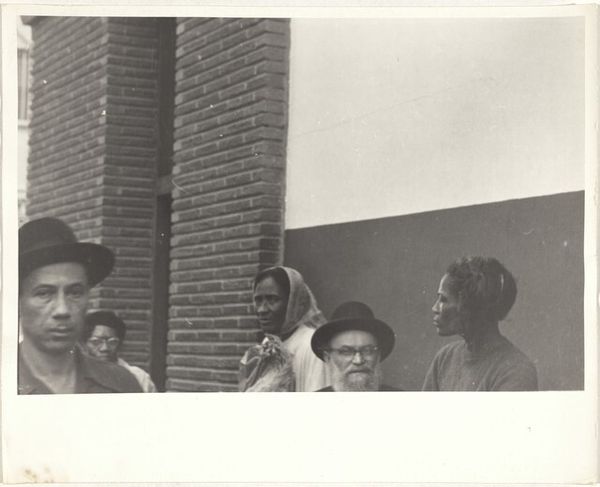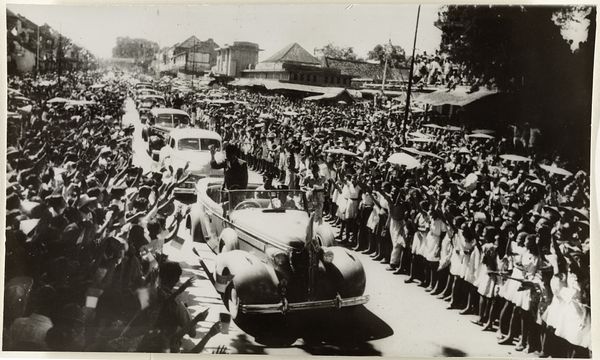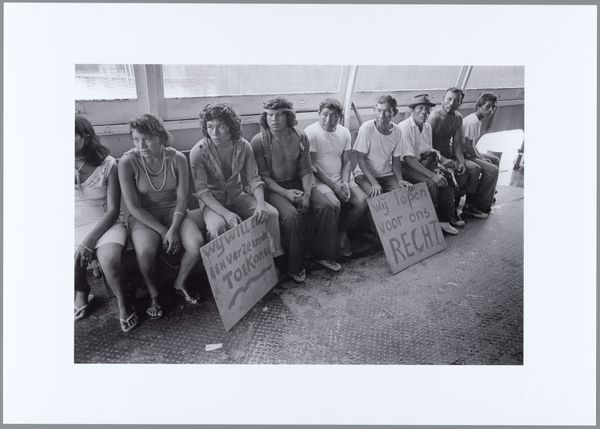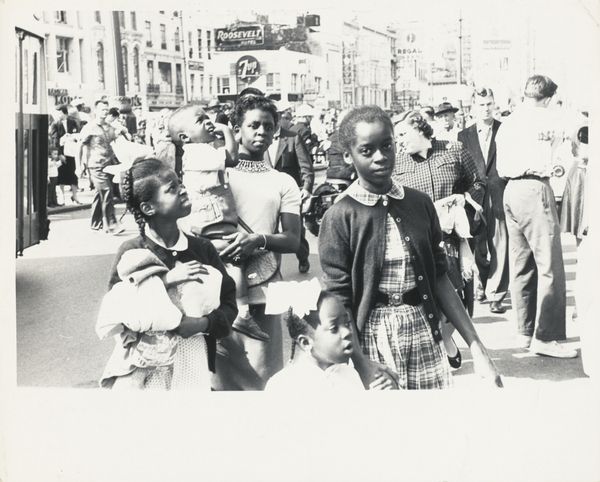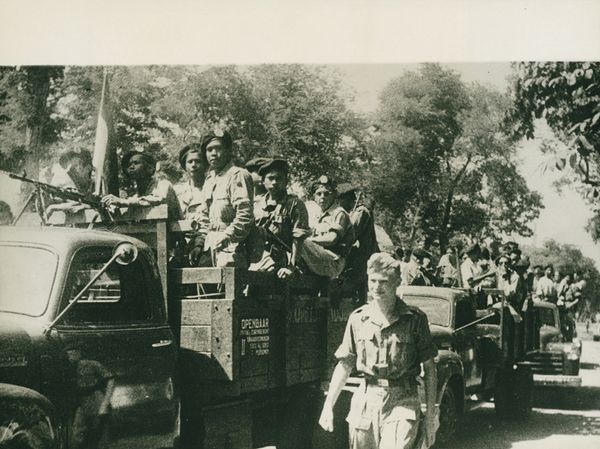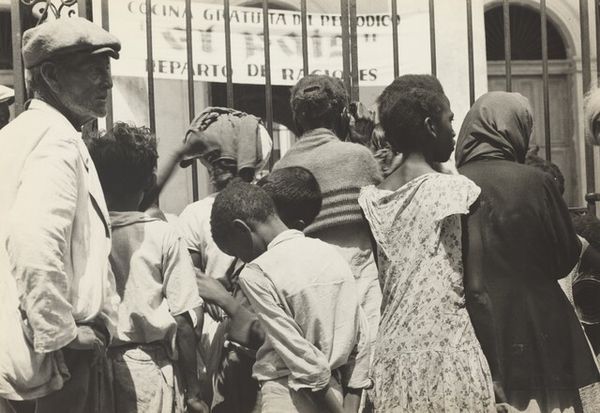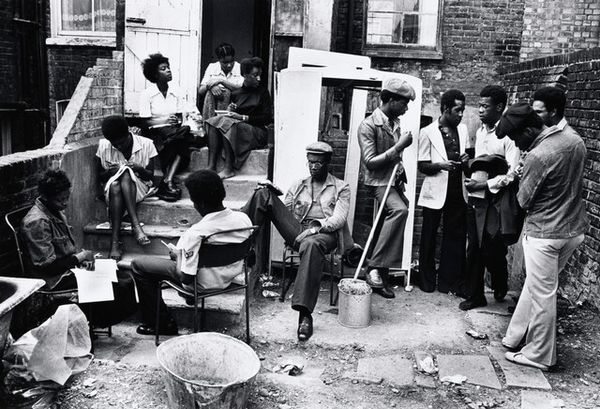
Republikeinse guerillas nemen dorpje Kotagede over Possibly 1948 - 1949
0:00
0:00
associatedpress
Rijksmuseum
photography, gelatin-silver-print
#
portrait
#
african-art
#
photography
#
historical photography
#
photojournalism
#
gelatin-silver-print
#
history-painting
Dimensions: width 25 cm, height 13.5 cm
Copyright: Rijks Museum: Open Domain
Editor: Here we have a gelatin silver print from the Associated Press, titled "Republikeinse guerillas nemen dorpje Kotagede over," possibly taken between 1948 and 1949. It depicts armed guerillas alongside what appears to be UN personnel. I’m struck by the stark contrast between the youth of some guerillas and the gravity of their situation. What historical narratives do you see unfolding in this image? Curator: This photograph offers a potent lens through which to examine post-colonial power dynamics and the complexities of liberation movements. The presence of UN personnel raises critical questions: Whose interests are being served here? Are they acting as peacekeepers or observing a transition of power still rife with conflict and inequality? Editor: That’s a really interesting point. I was initially focused on the Indonesian guerillas and the fact they had taken control of Kotagede, but now I’m questioning the role of the UN presence as potentially an observation point regarding a colonial aftermath, with Indonesia fighting for self-determination. Curator: Exactly! And consider the individuals portrayed. Who is seen, how are they positioned, and what narratives are being visually prioritized? Does the photograph celebrate Indonesian independence, or does it reveal lingering Western influence and perhaps a more ambivalent form of liberation? Notice how the weaponry juxtaposes against civilian clothing. Where do their identities truly lie in that intersection of resistance and cultural disruption? Editor: So, it’s less about a straightforward victory and more about an ongoing struggle for identity and self-representation amidst shifting global powers? I suppose by understanding what happened in places like Kotagede in the 1940s, we’re better equipped to unpack current international events? Curator: Precisely. By engaging with this image, we can think critically about the long shadow of colonialism and challenge dominant narratives about freedom and independence. I'm particularly encouraged that you've grasped that these past histories illuminate the urgent challenges that still affect international relations. Editor: I’ll never look at a historical photo the same way. Thanks for offering an eye towards cultural contexts of gender, race and power!
Comments
No comments
Be the first to comment and join the conversation on the ultimate creative platform.
